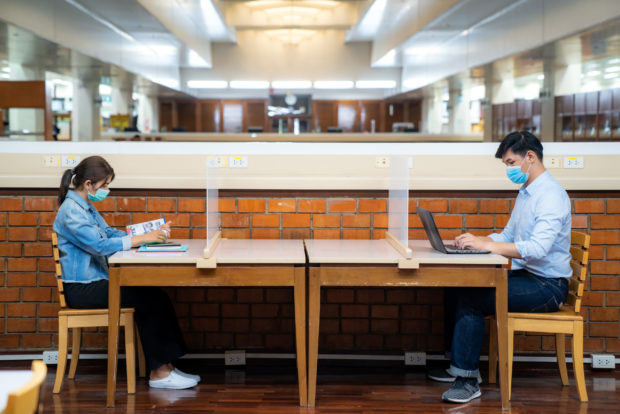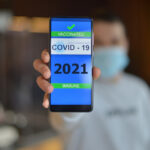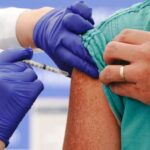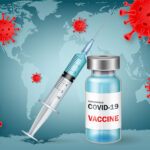The combined effectiveness of three COVID-prevention strategies on college campuses—mask-wearing, social distancing, and routine testing—are as effective in preventing coronavirus infections as the Pfizer and Moderna vaccines approved by the U.S. Food and Drug Administration (FDA), according to a new study co-authored by a Case Western Reserve University researcher.
The research, published in Annals of Internal Medicine, has immediate significance as college semesters are poised to start again—and as the distribution of approved vaccines lags behind goals.
Adding routine lab-based testing to the mix would prevent 92-96 percent of COVID infections. Still, the cost per infection prevented increases substantially, to $2,000 to $17,000 each, depending on test frequency.
As the infection rate continues to rise during the winter, the findings are especially meaningful for institutions of higher learning aiming to strike a balance between in-person and remote instruction, while managing costs to promote safety and reduce transmissions.
“While some measures are highly effective, implementing them is entirely up to each college’s financial situation, which may have already become strained because of the pandemic,” said Pooyan Kazemian, co-senior author of the study and an assistant professor of operations at the Weatherhead School of Management at Case Western Reserve.
“It is clear that two common non-medical strategies are very effective and inexpensive—and allow for some in-person instruction,” said Kazemian. “While it’s true routine testing of the asymptomatic helps catch some infections early and reduce transmissions, they also pose the highest financial and operational burden, even if performed every 14 days.”
Among the study’s other findings:
- About three of every four students—and nearly one in six faculty—would become infected over the semester in the absence of all mitigation efforts.
- Minimal social distancing policies would only reduce infections by 16 percent in students.
- While closing the campus and switching to online-only education would reduce infections by 63 percent among students, it would be less effective than opening the campus and implementing a mask-wearing and social distancing policy, which would reduce infections by 87 percent among students.
The Study
Researchers examined 24 combinations of four common preventive strategies—social distancing, mask-wearing, testing and isolation—and calculated their effectiveness and cost per infection prevented.
The team took into account interactions between three groups: students, faculty, and the surrounding community (including staff), and used a computer simulation model Kazemian and his colleagues developed—known as Clinical and Economic Analysis of COVID-19 interventions, or CEACOV—that simulated a semester of a mid-sized college (5,000 students and 1,000 faculty).
“While states have started offering COVID-19 vaccine to healthcare workers, first responders, and long-term care facilities, it is unlikely that most students and university faculty and staff will be offered a vaccine until late in the spring semester,” said Kazemian. “Therefore, commitment to mask-wearing and extensive social distancing, including canceling large gatherings and reducing class sizes with a hybrid education system, remains the primary strategy for minimizing infections and keeping the campus open during the spring semester.”
The study was conducted with contributors from Brigham and Women’s Hospital, Harvard Medical School, Boston University School of Public Health, Massachusetts General Hospital, and the Harvard T. H. Chan School of Public Health.
Study: College Campuses and COVID-19 Mitigation: Clinical and Economic Value





















 Five AI Trends Reshaping Insurance in 2026
Five AI Trends Reshaping Insurance in 2026  Insurance Costs, Climate Concerns Factor Heavily in U.S. Home Buying Decisions
Insurance Costs, Climate Concerns Factor Heavily in U.S. Home Buying Decisions  NOAA Announces Latest AI-Driven Global Weather Models
NOAA Announces Latest AI-Driven Global Weather Models  Artificial Intelligence Is Rewriting the Rules for Commercial Lines
Artificial Intelligence Is Rewriting the Rules for Commercial Lines 







